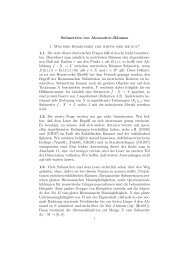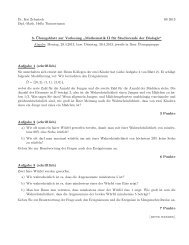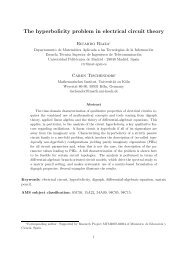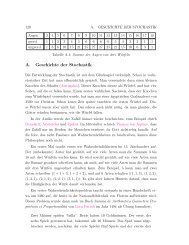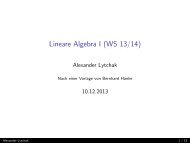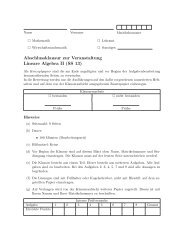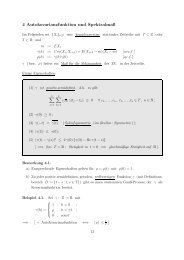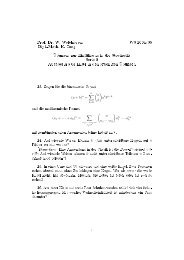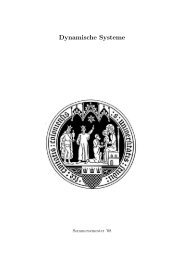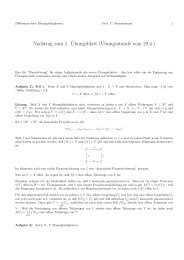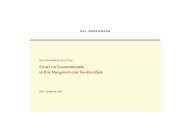Inhaltsverzeichnis - Mathematisches Institut der Universität zu Köln
Inhaltsverzeichnis - Mathematisches Institut der Universität zu Köln
Inhaltsverzeichnis - Mathematisches Institut der Universität zu Köln
Create successful ePaper yourself
Turn your PDF publications into a flip-book with our unique Google optimized e-Paper software.
DMV Tagung 2011 - <strong>Köln</strong>, 19. - 22. September<br />
Gabriela Weitze-Schmithüsen<br />
<strong>Universität</strong> Karlsruhe<br />
Origami-Teichmullerkreisscheiben im Culler-Vogtmann-Outerspace<br />
Origamis sind Überlagerungen des Torus, die über höchstens einem Punkt verzweigen. Variation <strong>der</strong><br />
komplexen Struktur auf dem Torus induziert eine Familie von komplexen Strukturen auf <strong>der</strong> überlagernden<br />
Fläche. Diese bilden eine geodätische Kreisscheibe im <strong>zu</strong>gehörigen Teichmüllerraum Tg. Das Bild im<br />
Modulraum Mg ist eine komplexe algebraische Kurve. Diese ist bis auf endlich viele Punkte durch ihre<br />
Veech-Gruppe bestimmt, eine Gruppe, die gleichzeitig als Matrizengruppe in GL(2,R) und als Untergruppe<br />
<strong>der</strong> <strong>zu</strong> Mg passenden Abbildungsklassengruppe aufgefasst werden kann. In dem Vortrag wird eine<br />
analoge Konstruktion im Culler-Vogtmann Outerspace CVn, dem Teichmüllerraum für metrische Graphen<br />
von Geschlecht n, und im <strong>zu</strong>gehörigen Modulraum vorgestellt. Mit Hilfe dieser können Rückschlüsse auf<br />
die ursprüngliche Teichmüllerkurve C gezogen werden.<br />
Andreas Zastrow<br />
University of Gdansk<br />
The homology group of a space, where every closed path is homotopic to an infinite<br />
commutator product of loops<br />
In 1986, Umed Karimov constructed a space as a one-point compactified CW-complex, where the<br />
relations built into the CW-Complex were chosen so that every path would be homotopic to an infinite<br />
commutator product of loops. In 2002, Karimov already conjectured that the first homology group of<br />
this space is huge and asked in private conversation, whether this could be proven. The main subject<br />
of this talk will be about how to answer Karimov’s question. Due to the one-point compactification the<br />
one-skeleton of Karimov’s space is homotopy equivalent to the Hawaiian Earrings, hence the fundamental<br />
and first homology groups are factor groups of the fundamental group of the Hawaiian Earrings. The<br />
talk will also outline the authors’ concept of describing the fundamental group of the Hawaiian Earrings<br />
by tame words, and some corollaries that could be drawn from this method such as the discovarage<br />
subgroups isomorphic to the rationals in the fundamental group of Griffiths’ space and what might be interpreted<br />
as an infinitary version of the solution of the word problem for this fundamental group and the first<br />
homology group of the Hawaiian Earrings and of Griffiths’ space. This is a joint work with Oleg Bogopolski.<br />
165




